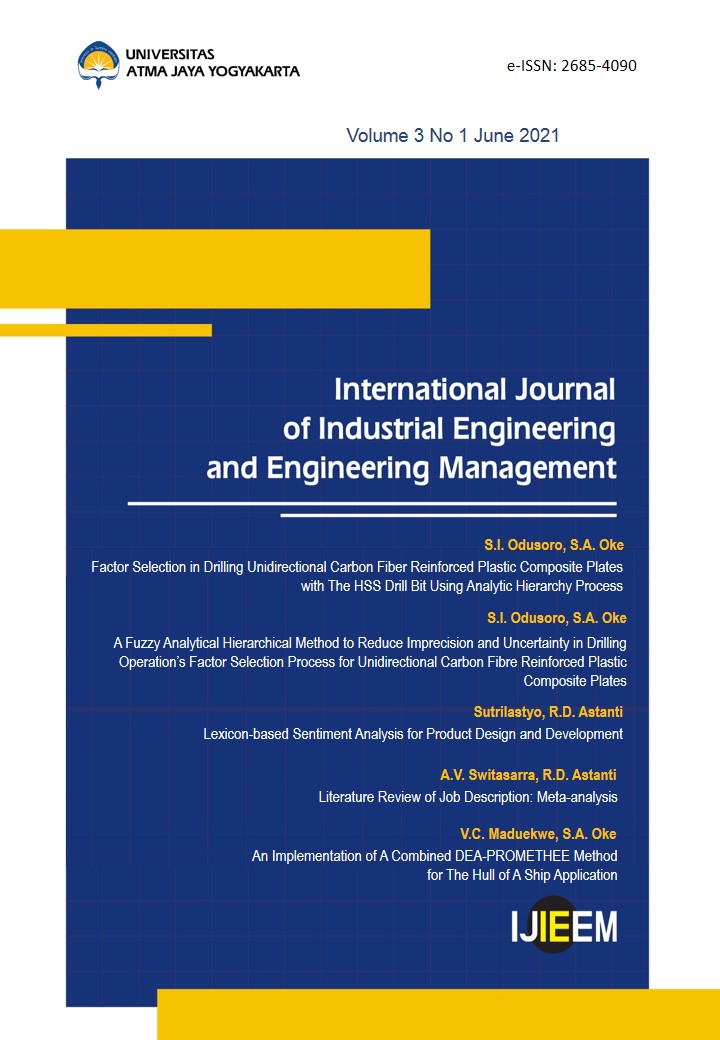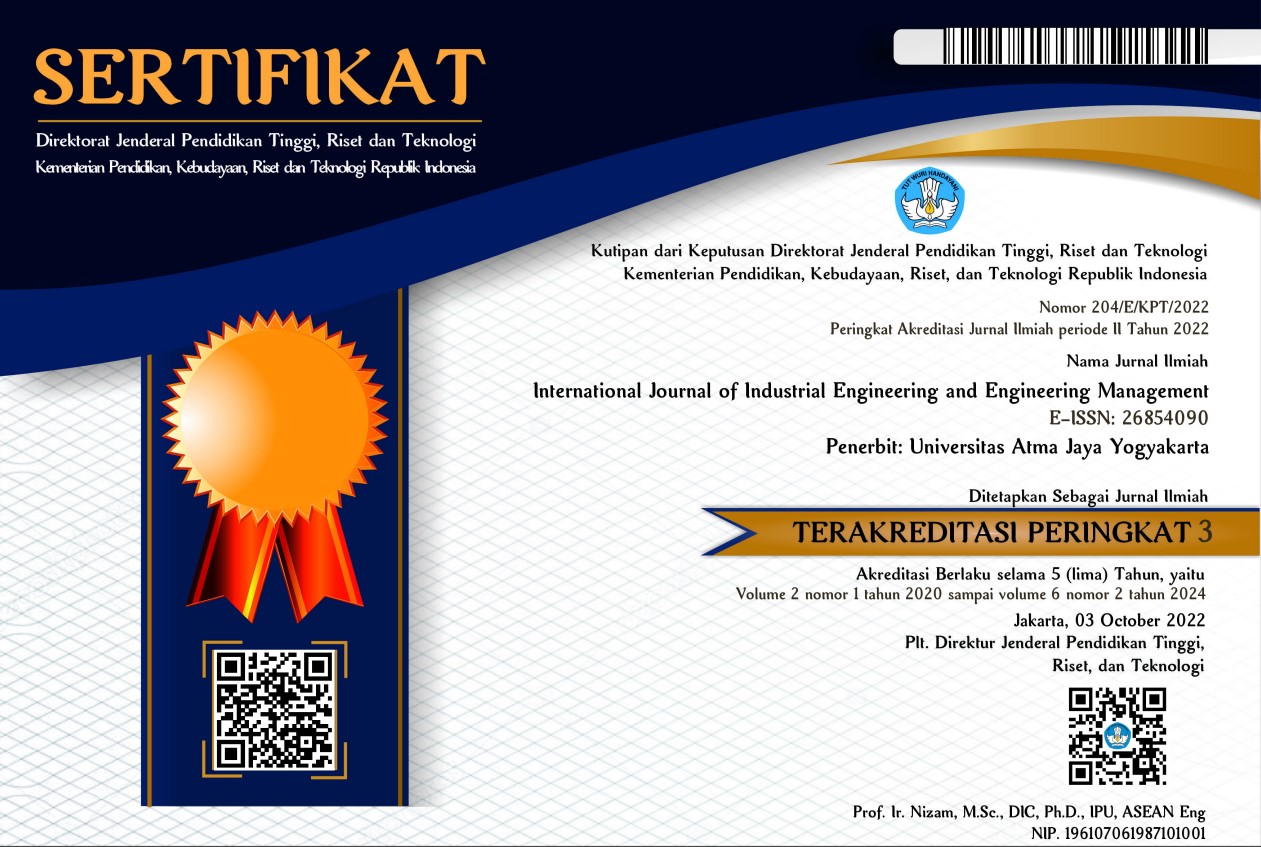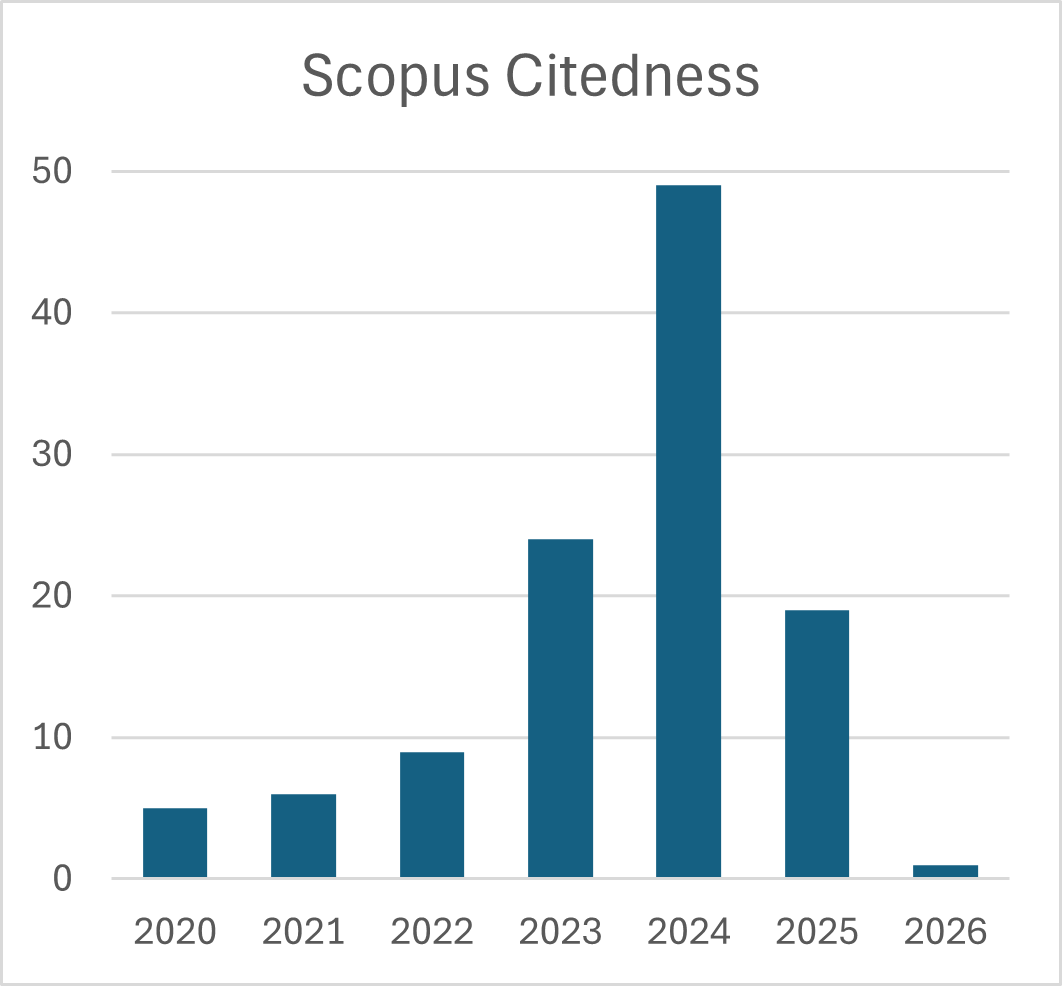An Implementation of A Combined DEA-PROMETHEE Method for The Hull of A Ship Application
DOI:
https://doi.org/10.24002/ijieem.v3i1.4437Keywords:
Ship, multicriteria analysis, composite, data envelopment analysis, PROMETHEEAbstract
The selection of an appropriate parameter in a water absorption process experiment is an important route to reducing fabrication wastes and ensuring the optimum deployment of scarce process resources to the appropriate parameter. However, the literature is inadequate in providing an appropriate direction on selecting parameters for the hull of the ships' application due to the conflicting requirements of the interested parties. A novel method called the Data Environment Analysis (DEA) to overcome this problem. Preference Ranking Organization Method for Enrichment of Evaluations (PROMETHEE) method is deployed to establish the appropriate parameter in a water absorption process on epoxy composite. The net outranking results show that criterion B (final weight) is placed in the first position. The criterion A (initial weight), D (thickness), and C (length) are placed in the second, third, and fourth positions, respectively, while E (time) is not necessary to the achievement of the system's goals. The key novelty is the unique application of the fused DEA-PROMETHEE method to a composite using the Taguchi signal-to-noise ratio response table for the hull of a ship. The method enhances the performance of multiple inputs (parameters) and multiple outputs (responses). The results of the DEA method-PROMETHEE method established the potential of epoxy composite to be used on the ship for the hull component. This could reduce the waste generated in the system, and guided allocation of resources are made to the appropriate parameters and, consequently, enhance the shipping company's profit. Furthermore, the results could improve the shipping vessel performance and develop a sustainable practice, which will lengthen the lifespan of the shipping industry.
References
Abiola, I. T., & Oke, S. A. (2021). Cause-and-effect relationship analysis of cocoa pod husk composites in water absorption process parametric evaluation: A DEMATEL approach. Indonesian Journal of Industrial Engineering & Management, 2(1), 51-66.
Abiola, I. T., & Oke, S. A. (2021). A fuzzy analytic hierarchy model to appraise water absorption process parameters in cocoa pod husk composite. Kufa Journal of Engineering, 12(2), 99-117.
Andersen, P., & Petersen, N. C. (1993). A procedure for ranking efficient units in data envelopment analysis. Management Science, 39(10), 1261-1264.
Ajibade, O. A., Agunsoye, J. O., & Oke, S.A. (2019). Optimisation of water absorption parameters of dual-filler filled composites using Taguchi and moderated Taguchi techniques. Kufa Journal of Engineering, 10(2), 134-151.
Babaee, S., Bagherikahvarin, M., Sarrazin, R., Shen, Y., & Hermans, E. (2015). Use of DEA and PROMETHEE II to assess the performance of older drivers. Transportation Research Procedia, 10, 798-708.
Bagherikahvarin, M. (2019). A DEA-PROMETHEE approach for complete ranking of units. International Journal of Operational Research, 35(2), 224-244.
Bagherikahvarin, M., &Smet Y., D. (2016). A ranking method based on DEA and PROMETHEE II (a rank based on DEA and PR II). Measurement, 89, 333-342.
Bagherikahvarin, M., & De Smet, Y. (2017). Determining new possible weight values in PROMETHEE: a procedure based on data envelopment analysis. Journal of the Operational Research Society, 68(5), 484-495.
Bal, H., Orkcu, H. H., & Celebioghu. S. (2010). Improving the discrimination power and weight dispersal in the data envelopment analysis. Computers and Operations Research, 37(1), 99-107.
Bales, N. K. (1980, October 6-10). Optimizing the seakeeping performance of destroyer type hulls. In Proceedings of the 13th Symposium on Naval Hydrodynamics, Tokyo, Japan.
Cerka, J., Mickeviciene, R., Ašmontas, Ž., Norkeviˇcius L., Žapnickas, T., Djaˇckov, V., & Zhou, P. (2017). Optimization of the research vessel hull form by using numerical simulation. Ocean Engineering, 139, 33–38.
Charnes, A., Cooper, W. W., & Rhodes, E. (1978). Measuring the efficiency of decision making units. European Journal of Operational Research, 2(6), 228-238.
Cheng, X. D., Feng, B. W., Liu, Z. Y., & Chang H. C. (2018). Hull surface modification for ship resistance performance optimization based on Delaunay triangulation. Ocean Engineering, 153, 333-344.
Deng, R. (2017). Optimization of ship principal dimensions based on empirical methods. In House Report, Harbin Engineering University: Harbin, China, 29-30.
Deng, R., Wang, S., Hu, Y., Wang, Y., & Wu, T. (2021). The effect of hull form parameters on the hydrodynamic a performance of a bulk carrier. Journal of Marine Science and Engineering, 9, Article 373.
Deshmukh, S. C. (2013) Preference ranking organization method of enrichment evaluation (PROMETHEE). International Journal of Engineering Science and Invention, 2(11), 28-34.
Fare, R., Grosskopf S., & Norris, M. (1994). Productivity growth, technical progress and efficiency charge in industrialised countries: reply. The American Economic Review, 87(5), 1040 -1044.
Feng, Y. K., Chen, Z. G., Dai, Y., Wang, F., Cai, J. Q., & Shen, Z. X. (2018). Multidisciplinary optimization of an offshore aquaculture vessel hull form based on the support vector regression surrogate model. Ocean Engineering, 166, 145–158.
Georgiev, P., & Pentschew, P. (2002). Parameter ship hull design based on Taguchi method. Schiffbaufprshung, 41(314), 19-28.
Guo, C. Y., Wu, T. C., Zhang, Q., & Lou, W. Z. (2017). Numerical simulation and experimental studies on aft hull local parameterized non-geosim deformation for correcting scale effects of nominal wake field. Brodogradnja, 68, 77–96.
Hou, Y. H. (2017). Hull form uncertainty optimization design for minimum EEOI with influence of different speed perturbation types. Ocean Engineering, 140, 66–72.
Jeong, K. L., & Jeong, S. M. (2020). A mesh deformation method for CFD-based hull form optimization. Journal of Marine Science and Engineering, 8, Article 473.
Karasakal, E., Eryilmaz, U., & Karasakal O. (2021). Ranking using PROMETHEE when weights and thresholds are imprecise: A data envelopment analysis approach. Journal of the Operational Research Society.
Kim, J., Van, S. H., Park, I –R., Kim, K-S., & Choi, H-J. (2006). Panel cutting method: A new approach in hull surface panel generation. Journal of the Society of Naval Architects of Korea, 43(6), 638-646.
Kim, H., & Chi, Y. (2010). A new surface modification approach for CFD-based hull form optimization. Journal of Hydrodynamics: Ser. B, 22, 520-525.
Koh, C-D., Kim, H-C., Kim, S.-Y. (1998). Application of robust design method to a high speed planning hull. Journal of Ocean Engineering and Technology, 12(4), 144-151.
Lindstad, H., Jullumstro, E., & Sandaas, I. (2013). Reductions in cost and greenhouse gas emissions with new bulk ship designs enabled by the Panama canal expansion. Energy Policy, 59, 341–349.
Lindstad, E., & Bø, T. I. (2018). Potential power setups, fuels and hull designs capable of satisfying future EEDI requirements. Transportation Research Part D: Transport and Environment, 63, 276–290.
Macharis, C., & Smet, Y. D. (2015). Editorial, International Journal of Multicriteria Decision Making, 5(4), 295-296.
Maduekwe V. C., & Oke, S. A. (2020). Water absorption process parametric selection for natural composites using the PROMETHEE method and analytical hierarchy process for objective weights for ship's hull application. International Journal of Marine Engineering Innovation and Research, 5(4), 206-215.
Maduekwe, V. C., & Oke, S. A. (2021). An evaluation of water absorption process parameters for composites by deploying a novel DEMATEL method-PROMETHEE method. Indonesian Journal of Industrial Engineering & Management, 2(2), 127-146.
Mathew, M., Sahu, S., & Upadhyay, A.K. (2017). Effect of normalization techniques in robot selection using weighted aggregated sum product assessment. International Journal of Innovative Research and Advanced Studies, 4(2), 59-63.
Mahad, N. F., Aziz, N. A. A., Amin, F. A. M., & Mahyideen, J. M. (2020). A hybrid DEA PROMETHEE II method: A complete ranking of DMUs, Chapter 6, Changing lives in Brilliant ways, MNNF publisher.
Moreira, L., & Soares, C. G. (2020). Neural network model for estimation of hull bending moment and shear force of ships in waves. Ocean Engineering, 206, Article 107347.
Nair, A., Sivaprasal, K., & Nandakumar, C. G. (2017). Critical assessment criteria for ship hull structure based on ship operational life. Cogent Engineering, 4(1), Article 1345044.
Oliveira, D., Lansson, A.I., & Granhag L. (2018). Effect of ship hull form on the resistance penalty from biofouling. Biofouling: The Journal of Bioadhesion and Biofilm Research, 34(3), 262-272.
Onyekwere, O. S., Igboanugo, A. C., & Adeleke, T. B. (2019). Optimisation of acetylation parameters for reduced moisture absorption of bamboo fibre using Taguchi experimental design and genetic algorithm optimisation tools. Nigerian Journal of Technology, 38(1), 104-111.
Pechenyuk, A. V. (2017). Optimization of a hull form for decrease ship resistance to movement. Computer Research and Modeling, 9, 57-65.
Zhang, H., Liu, Z. Y., Zhan, C. S., & Feng, B. W. (2016). A sensitivity analysis of a hull's local characteristic parameters on ship resistance performance. Journal of Marine Science and Technology, 21, 592-600.
Zheng, X., Wang, S., Chew, C. M., & Lu W. F. (2016, September 6-9). A mathematical model for surface roughness of ship hull grit blasting. IEEE 21st International and Factory Automation, Berlin, Germany.
Downloads
Published
How to Cite
Issue
Section
License
Copyright (c) 2021 International Journal of Industrial Engineering and Engineering Management

This work is licensed under a Creative Commons Attribution 4.0 International License.








